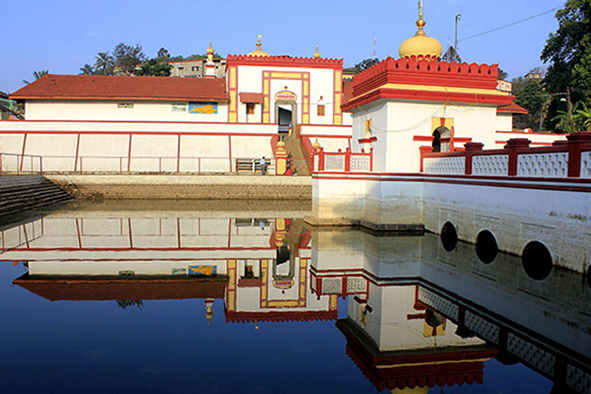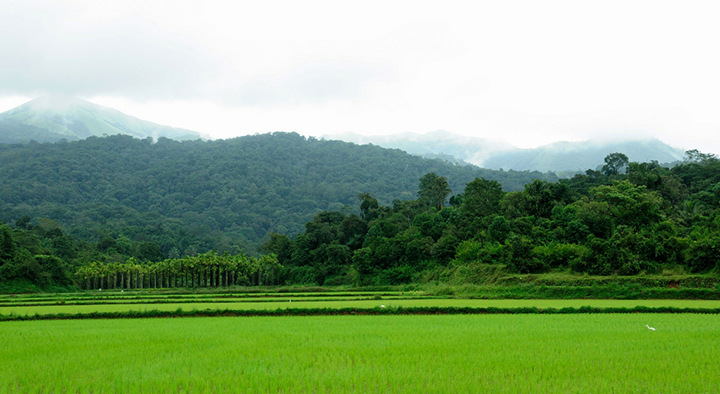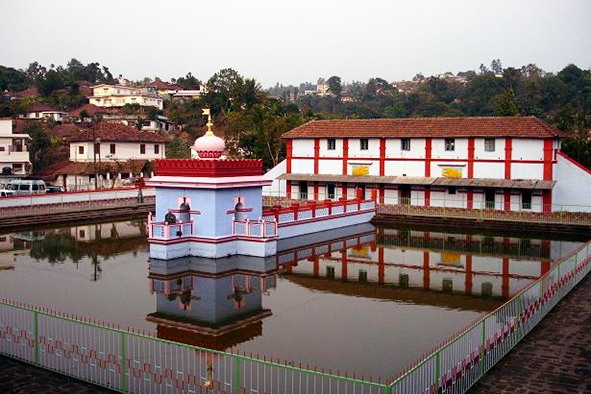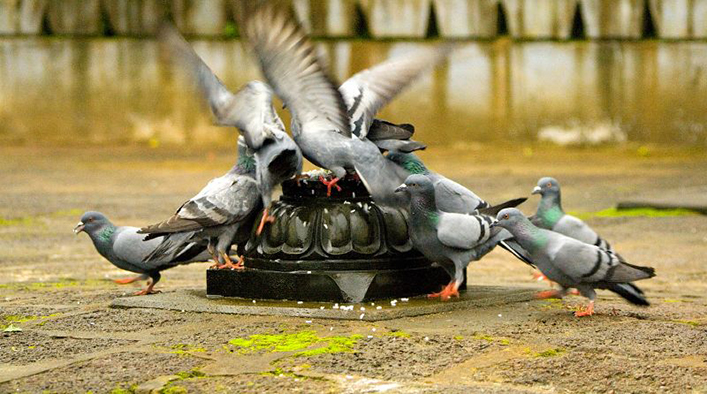The hilltop town of Coorg forms part of the backroads of Karnataka. Whilst many temples fall before you in this region, is there one particular temple’s architecture that makes it more distinct in what it represents?

Omkareshwara Temple (Photo: Ritesh the Creatographer via Wikimedia)
In typical Indian fashion my tour bus driver Govinder was running late as I awaited my 7am departure from the cosmopolitan IT capital of India, Bengalaru bound for Coorg. Bumps and potholes became more frequent as I reached the bendy roads of Coorg with the tranquil Tata tea fields creating a flourishing surrounding landscape.
My first stop was the Bylakuppe Tibetan monastery called Namdroling Nyingmapa. Within the grounds there were prayer wheels that are a depiction of inclusivity irrespective of one’s background or faith. Tibetan prayer flags proudly stood tall on the surrounding electricity poles. Signs in Tibetan script illustrate the acceptance of their history and culture outside of Tibet. This ideology set a precedent for what I was to witness later that day.
Whilst passing through a residential area of Madikeri, Govinder pointed out of the window and announced ‘Omkareshwara Temple’. He didn’t have much to say prior to this remark but his enthusiasm somewhat indicated that it is no ordinary Temple.
As I walked towards it I had the impression that this might have been one of a batch of similar style Hindu Temples that I was likely to encounter in this region; it somewhat resembled the Golden Temple in Amritsar with a waterway surrounding it. This was the first prominent feature that struck me, home to fish swimming around, blissfully unaware that they are the occupants of a unique historical environment.

Coorg Countryside (Photo: -Reji via Flickr)
Tragedy Creates A Legacy
In the 19th century the King of Kodagu, Linga Rajendra II craved eternal political power and Govinder told me that he believed the King was prepared to adopt a bloodhound approach in order to remain at the helm. Indeed he killed a Hindu Brahmin in the belief that he was fending off any potential threat to his stranglehold.
Legend has it that the spirit of the deceased troubled the King so much so that it resonated with karma. The Brahmin then resembled a ‘Brahmarakshas’ and as such was trained to destroy and depose of anything that stood in the way of their aspirations. Hence for the King to alleviate his demons he was ironically forced to seek the help of Brahmins.
The Brahmins advised the King to embark on a journey to the spiritual capital of India: Varnasi. Here he had to obtain a ‘Shivalingam’ (special stone) and lay it on the very site where he carried out his act of inhumanity. To truly mark his repentance he built a temple surrounding the Shivalingam and this was the birth of Omkareshwara in 1820. Whilst I felt the truth behind this story was not conclusive, the architecture laid out before my eyes illustrated remorse on the King’s part.
The exterior has a large dome at the forefront and smaller Moorish style turrets that resemble a mosque when viewed from a distance. I found this pleasantly surprising as despite Omkareshwara being labelled as a Hindu Temple dedicated to Lord Shiva, it was not wholly evident on appearance.

The temple tank of Omkareshwara Temple in Madikeri (Photo: Pratheepps via Wikimedia)
Omkareshwara has retained its combination of Islamic and Gothic style architecture to the present day. This is symbolic of secularism as it combines elements of different faiths as a result of a tragedy in the death of the Brahmin. Although the steps to the entrance are steep, one might feel deep satisfaction after overcoming this initial challenge.
Daily pujas (prayers) are a common occurrence inside Omkareshwara despite there being no pillars in the main hallway, which is typically a significant feature in Hindu Temples. Followers are accepting of the fact that they can still carry out their daily rituals within the confines of Omkareshwara despite the absence of notable ornaments and standings that are befitting of their place of worship.
The Temple’s exterior walls are in need of a spot of paint, but this also enhances its charm. That Omakreshwara can stand alone with no protest of its status from locals of all faiths is a testament to the purpose it has served and indeed should continue to do so.
After this surreal experience, I opted for a quiet lunch at a roadside cafe. Here I delved into a Thali (variety of curries) served on a banana leaf that was accompanied by a cup of Coorg tea. It was time for me to reflect on witnessing a representation of secularism within Indian society, something that can be overlooked in the current global climate where different religious beliefs are not always widely accepted.

Feeding time (Photo: Sowmya’s Photography via Flickr)